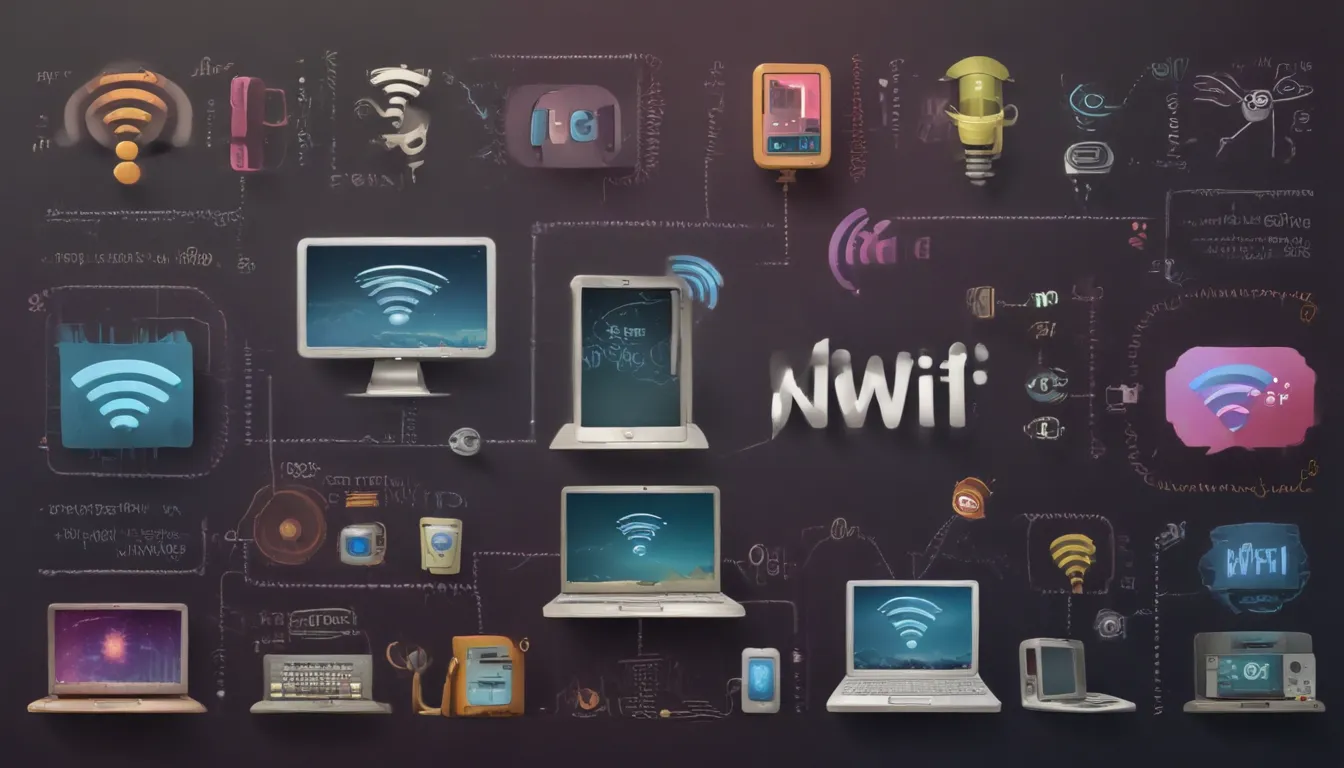A Note About Images: The images used in our articles are for illustration purposes only and may not exactly match the content. They are meant to engage readers, but the text should be relied upon for accurate information.
In today’s digital age, WiFi has become an indispensable part of our daily lives. With billions of Internet users and gadgets being connected every day, the impact of WiFi is undeniable. But have you ever stopped to think about the invention of WiFi and how it has evolved over the years? Join us on a journey through the history and development of WiFi as we explore its origins, functionality, and exciting future developments.
The Birth of WiFi: A Collaborative Effort
The inception of WiFi was not a solitary endeavor but rather a collaborative effort by a group of visionary individuals. Australian radio astronomer John O’Sullivan, along with a team of scientists, embarked on a quest to validate Stephen Hawking’s theory on evaporating black holes and their radio waves in the 1900s. Their research led to the discovery that radio waves could travel vast distances, laying the foundation for the development of WiFi technology.
Another key figure in the WiFi saga is Vic Hayes, widely regarded as the “father of WiFi.” Hayes, a pioneer in wireless communication, played a pivotal role in establishing the 802.11 standards that govern wireless communication. In 1992, a group of researchers led by John O’Sullivan revisited their failed experiment and successfully created a chip capable of detecting the weakest radio signals, leading to the birth of WiFi in 1997. This unexpected breakthrough marked a significant milestone in the history of technology.
Unraveling the Mystery of WiFi
Despite its widespread use, the origins of the term “WiFi” remain shrouded in mystery. Some believe it stands for Wireless Fidelity, while others argue that it is merely a meaningless acronym. Phil Belanger, a founding member of the WiFi Alliance, dismissed the notion that WiFi has any specific meaning. Interestingly, WiFi only acquired its name in 1999, two years after its invention.
The Inner Workings of WiFi
Have you ever wondered how WiFi works its magic? At its core, WiFi utilizes radio frequency signals to transmit and receive data between various smart devices within a local area, such as your home. Much like tuning into a radio station, your devices pick up these signals to establish a connection to the Internet. WiFi operates on two primary frequencies: the 2.4GHz and 5GHz bands, each offering distinct advantages in terms of coverage and speed.
Demystifying WiFi Connectivity: The Role of Wireless Routers
While WiFi may seem like a magical force connecting us to the digital realm, the reality is more grounded. Wireless routers serve as the bridge between our devices and the Internet, broadcasting WiFi signals that facilitate communication. These routers decode and relay information between devices and the Internet, ensuring seamless connectivity and data transmission. In essence, wireless routers act as intermediaries, ensuring that your devices stay connected to the online world.
Dispelling Misconceptions: WiFi vs. the Internet
It’s easy to conflate WiFi with the Internet, but in reality, they are distinct entities. WiFi refers to the wireless signal that enables device connectivity, while the Internet, also known as Wide Area Network (WAN), comprises a vast network of interconnected networks worldwide. Understanding this distinction sheds light on the intricate web of connections that underpin our digital landscape.
The Evolution of WiFi: A Technological Marvel
Since its emergence in the early 2000s, WiFi has undergone a series of transformations and enhancements that have propelled it to new heights of performance and efficiency.
Speeding Ahead: The Rise of WiFi Standards
From its humble beginnings with a 2 Mbit/s link speed, WiFi has evolved into a powerhouse of connectivity. Successive iterations, such as 802.11b, 802.11a, and WiFi 6 (802.11ax), have ushered in faster speeds and increased data transfer rates. Today, WiFi 6 boasts an impressive 9.6 Gbps speed, setting new benchmarks for wireless communication.
Strengthening Connections: Innovations in WiFi Technology
Innovations in WiFi technology have focused on improving signal range and connectivity speed. The introduction of dual-band routers in 2003 marked a significant advancement, allowing devices to connect to the more efficient 5GHz frequency for optimal performance. Moreover, the adoption of beamforming technology in 2012 revolutionized WiFi transmission by targeting signals towards specific devices, ensuring faster and more stable connections.
Embracing the Future: WiFi 6 and Beyond
We are currently in the era of WiFi 6, which offers unparalleled connectivity speeds and efficiency. With a 300% boost in linkup speeds compared to WiFi 5, WiFi 6 addresses the challenges posed by multiple device connections in a household setting. Looking ahead, the upcoming 802.11be WiFi 7 promises even greater advancements, with projected throughput speeds of up to 30 Gbps and enhanced interference mitigation capabilities.
Conclusion: Embracing a Wireless Future
As we reflect on the evolution of WiFi from its humble beginnings to its current state of technological prowess, one thing becomes clear: the journey of WiFi is far from over. With each passing year, new innovations and advancements push the boundaries of wireless communication, enriching our lives and expanding the possibilities of the digital world. As we eagerly anticipate the dawn of WiFi 7 and beyond, let us celebrate the remarkable legacy of WiFi and its transformative impact on the way we connect, communicate, and collaborate in the modern era.






